Drainage Systems take water from a drainage problem area through a Drain Pipe where it then is released through an exit point such as a Curb Fitting or Pop-Up Emitter
. The Water enters the drain pipe through some type of drain. Drains that take in water in a Drainage System are of the Surface Drain type which has a Grate on top of some type or size of basin. Or French Drain Style which absorb water through gravel above a perforated Drain Pipe.
Standard Surface Drains are 6 inch, 9 inch and 12 inch. Each size Drain may have a Square or round Grate sitting on top of a drain basin which is connected to a drain pipe.
The size of the Drain Basin and the size of the Drain pipe dictate how much water can be moved and how fast drainage can take place. A larger Drain Pipe is always a better choice. A 12 inch Drain Basin with a grate connected to an exit point with six inch Drain pipe move much more water than the same system with only 4 inch Drain Pipe. The 6 inch Drain Pipe moves many times more water than 3 inch or 2 inch Drain Pipe. Larger Drain Basins take more water into a Drainage System as well. French Drains always take in more water faster than Surface Drain. A 4 inch French Drain will take in and move a much higher volume of water than a 4 inch Surface Drain.
Key Points -- French Drains move more water than surface Drains.
Larger Drain Pipe move more water than Smaller Drain Pipe
Using large Drain Pipes with A French Drain System moves the most water of all
Using 2 or more Exit points for the Drainage System increases Drainage Capacity.
Drainage Systems are not Flood Prevention Systems. If Flooding allows flood water to rise above the exit point of a Drainage System, water will not drain away because the exit point is under water. An exit Point that is way down hill from the drainage system ensures drainage under most all situations. As long as the water has a place to drain to the drainage system will function correctly.
Drainage Systems can be made up of one drain or a combination of many drains. Drainage problems can be very complex. Complex Drainage Problems may require a combination of several different types of drains all inter-connected and working together. Other times the drainage problem may be simple and straight-forward requiring only one drain or several of the same type of drain connected together.
An example of a complex drainage system would be: A French Drain in the back yard connected to a Surface Drain near a flower bed connected to several gutter downspouts, which are connected to a Channel Drain going across a driveway, which is connected to additional Surface Drain in the front yard, which runs to a Curb Fitting that lets all the water drain out on to the street.
A simple Drainage System might consist of a Surface Drain that is connected to a second Surface Drain which runs to a Pop-up Emitter which lets water drain over the curb and into the street.
An "Exit Point" is the term used for where all the water leaves the Drainage System. Determining the Exit Point is very critical. It is one of the first things we do when diagnosing a Drainage Problem.
- French Drain running under sidewalk to Pop Up Emitter
1. Keep water away from foundations -- A French Drain is best because it can move Surface Water and Sub-Surface Water (water moving under ground) away from the foundation. Many times less experienced companies install Surface Drains to keep water away from foundations. This can be a big mistake. A Surface Drain can't move or drain Sub-Surface Water. Also A Surface Drain often can't move enough water fast enough and easily becomes overwhelmed during a heavy rain. A Surface Drain also can't cover or protect a broad enough area. Surface Drains should be designed in a Drainage System to be located in smaller Drainage Areas moving moderate amounts of water. Surface Drains look better than French Drains. If ,"appearance" is more important than Drainage Capacity, Go with the Surface Drain. Just know what you are getting into and what your expectations should be. One side of a foundation alone, can be over 100 feet. A 4 inch or 6 inch French Drain is best when protecting a large area such as a foundation.
2. Keep water away from small or inclosed areas. This might be a low area just through a gate on the side of a house, or the low area between a flowerbed and the wall of a house, or standing water on or near a sidewalk or driveway. These types of Drainage Problems are best served with Surface Drains. A Surface Drain can move water away from a low area that is relatively small. This can occur in yards, flowerbeds, sidewalks and driveways. A Surface Drain is designed to move Surface Water away from a problem area to a predetermined exit point. Surface Drains are available in many sizes. How quickly they remove standing water is usually determined by the size of the Drain Pipe that is connected to the Drain.
- Surface Drain Installation in Norman
- Don't let standing water or storm water run-off damage your home! CMG Sprinklers and Drains can help with Drainage Problems in and around your home or business. If you have water standing in the wrong place after a hard rain, a Drainage System can
be a great solution! If your sidewalk turns into a moat after a storm,
or if your back yard floods from run-off from your neighbor's roof give CMG a call. CMG can quickly diagnose your Drainage Problems and provide a solution. We incorporate several types of Drains in our Drainage System depending on the Drainage Problem. CMG installs: French Drain, Surface Drain, Channel Drains, Basin Drains, Trench Drains, and Sump pumps.We install Drains in lots of places including, Yards, Flower Beds, Driveways, Sidewalks, and next to Swimming Pools.
Just what is a "French Drain?" Many times people incorrectly use the phrase, "French Drain," to apply to many different types of Drains that could be used in a Drainage System. The term is widely used and many times incorrectly connected to "Surface Drains," or "Channel Drains."
A Surface Drain has a grate that sits on top of a basin. The basin is underground. A Drain Pipe is connected underground to an outlet on the Drain Basin. Storm-Water Drains through the grate into the Drain Basin. Once in the Drain Basin, water travels out of the basin through a Drain Pipe. The Storm-Water continues downhill in an underground Drain Pipe to an exit point.
THIS IS NOT A FRENCH DRAIN!
A Surface Drain may come in many different shapes or sizes. The Drain Grate may be round or square. Here is a picture of a common Surface Drain.
A Channel Drain is a type of Surface Drain and many times is installed in concrete across sidewalks or driveways.- Surface Drain and Drain Pipe
A French Drain is completely different from a Surface Drain. A basic French Drain consists of a Perforated Drain Pipe in the bottom of a trench. The Drain Pipe should have a neoprene sock around the Perforated Drain Pipe. This is to ensure that the Drain Pipe does not become clogged.
The dirt that was taken out to make the trench is hauled away. It is replaced by some type of small stone or gravel depending on what is desired or available. I prefer crushed 1 inch lime stone. It is the most economical option in my area. Pea Gravel or some other type of small stone can work just as well. The lime-stone or gravel is placed in the trench on top of the perforated Drain Pipe and filled all the way to the surface (ground level). In some cases where the French Drain needs to be deep or is being placed in sandy soil, a special trench liner must be placed in the trench before the perforated Drain Pipe or the Gravel are installed. This helps maintain the integrity of the trench over time. It also increases the cost of the French Drain and the amount of time to install it. I install a trench liner in a French Drain about 20% of the time. Most of the time a liner in not needed.
- French Drain March 2011
A French Drain is designed to handle a large volume of water and cover a large area. The Drain is anyplace the trench goes. It has many applications and can be used in many situations. It can be installed by itself or incorporated into a Drainage System with Surface Drains or Gutter Down-Spouts connected to it.The main downfall of a French Drain is that they, for the most part aren't very pretty. They don't look very nice in a yard once they are completed.Depending on the area the French Drain is installed and the type of grass around the French Drain, will dictate whether grass grows over the lime stone. Grass can grow up and through the gravel in the French Drain over time eventually covering the gravel. This is Ok. It won't have a measurable effect on the performance of the drain.DONT COVER THE GRAVEL IN THE FRENCH DRAIN WITH DIRT. THE FRENCH DRAIN WON'T WORK IF THE TRENCH IS CLOGGED WITH DIRT. DON'T EVEN INSTALL IT IF YOU ARE GOING TO COVER IT UP WITH DIRT.DECORATIVE STONE CAN BE USED TO COVER A FRENCH DRAIN AND THEY LOOK GREAT AND LAST A LIFETIME.
- French Drains Can Look Great!
- CMG installs Drainage Systems for home owners and Realtors who are in the process of selling a home. Sometimes a Drainage System must be installed before closing. We are more than happy to help!
- This concludes,"French Drains Oklahoma City, Drainage Systems, Surface Drains.
Drainage Systems quickly can become more complicated. Considerations must include:
How does the water get to the problem area? There may be one or many sources.
Water Sources:
1. It falls from the sky directly
2. It flows down hill over the surface (surface water)
3. It flows underground under the surface (sub-surface water)
4. It flows from the edge of a roof ( There may be many roofs near the problem area, neighbors etc.)
5. It flows from a gutter downspout
6. It flows over the edge of a gutter because the gutter is too small is is clogged
7. It flows up from the ground (seeps and springs are common in Oklahoma)
8. It flows from a sprinkler system use ( yours or your neighbors)
9. It flows from a leaking pipe ( water mains, water meters, water lines, sprinkler pipes, sprinkler valves)
There are other reasons for Drainage Problems, the above reasons are just the most common.
Once the number of water sources is determined, a rough estimate of the amount of water that needs to be drained away on average must be estimated. This can be simplified down to "SMALL, MEDIUM, OR LARGE AMOUNTS OF WATER TO BE DRAINED AWAY. You don't have to be an engineer trying to calculate fluid dynamics. Experience at diagnosing drainage problems helps however. How much water needs to be moved will help determine the type and size of the Surface Drain or French Drain that needs to be installed. It also helps to determine the size of Drain Pipe required for the Drainage System. A good rule to follow is, "If in doubt, install a larger Drain and Drain Pipe." Unused Drainage Capacity is better than property damage caused by a Drain that is overwhelmed by too much water.
For home and small business use typical materials used are:
6 inch, 9 inch, and 12 inch Surface Drains -
3 inch, 4 inch, and 6 inch Drain Pipes --
3 inch, 4 inch, and 6 inch French Drains --
French Drains move more water than Surface Drains --
French Drains move Surface Water and Sub-Surface Water
Surface Drains move Surface Water only
Surface Drains look nicer than French Drains in most cases
Once the type and number of drains is determined and what size Drain Pipe will connect them, an exit point must be selected. (Where is the Drainage System going to take the water to and release it?)
- Installing Drainage Curb Fitting for a French Drain in Norman
- Cutting The Curb and Installing Curb Fitting for French Drain
- Popup Emitter to release water from a Drainage System in Yukon.

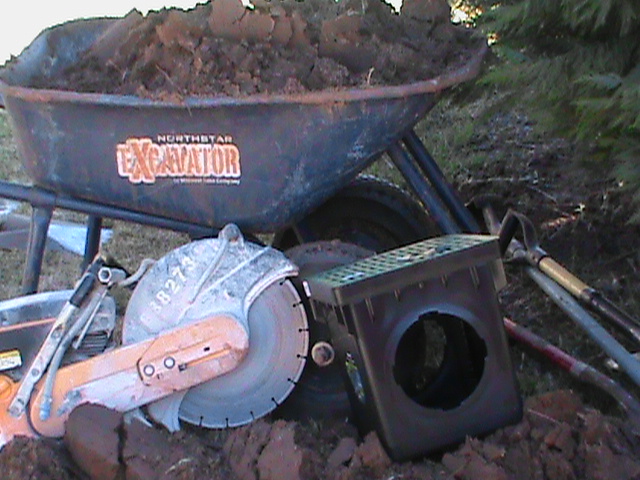

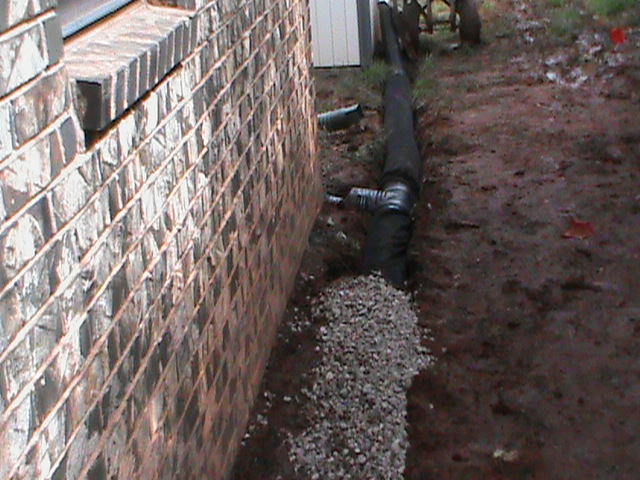



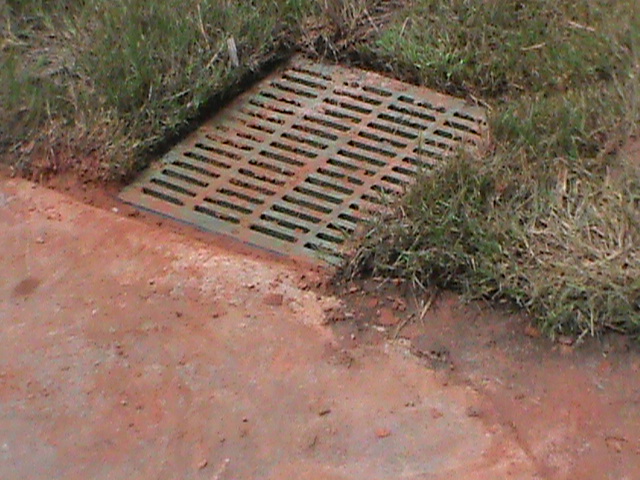
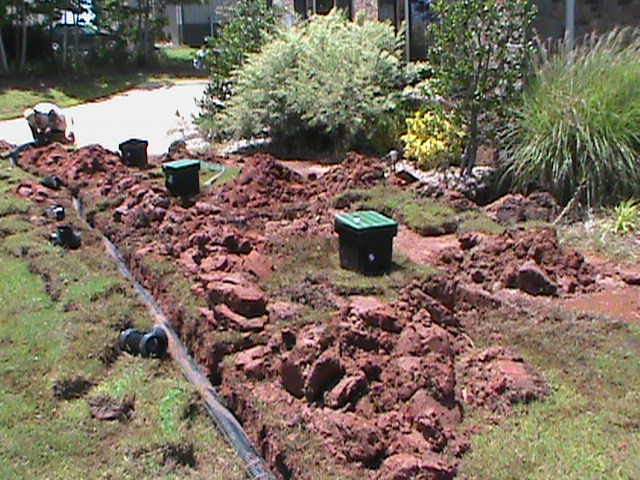
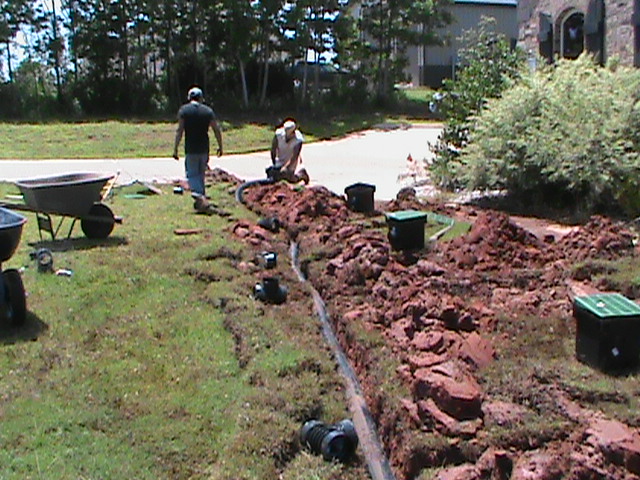
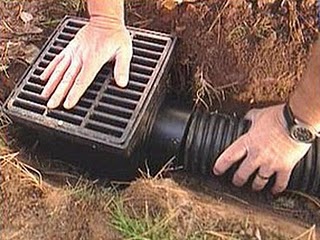
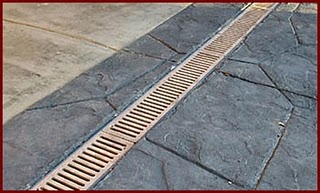
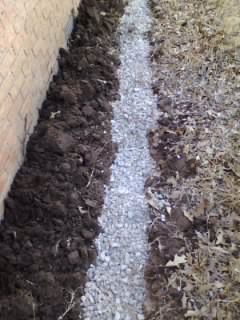
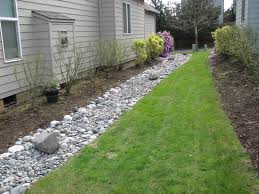

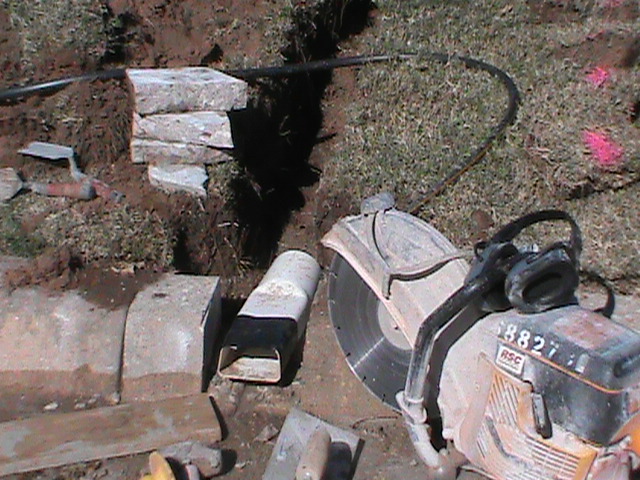
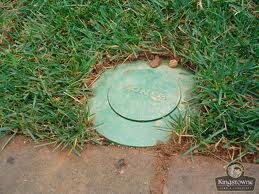
No comments:
Post a Comment